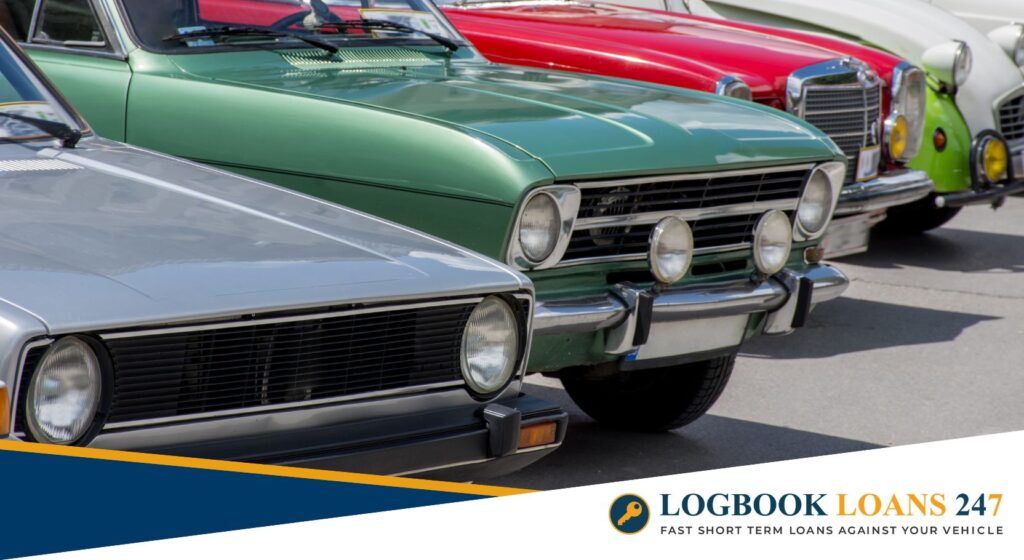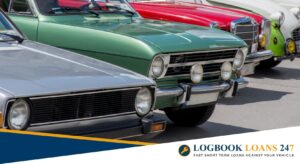When it comes to insuring your vehicle, understanding the type of cover you need is essential, especially if you own a classic car. The distinction between classic and regular motor insurance may seem subtle at first glance, but the underlying policies, usage assumptions and cost structures can differ considerably.
Whether you’re a collector of vintage vehicles, or preserving your much-loved old classic car as a one-off project, learning the basics of insurance, and which is the right option for you, should be one of the first things you do.

© Denis Andricic / Shutterstock.com
What is a classic car?
According to HMRC, a vehicle is classified as a classic car if it’s more than 15 years old and has a minimum market value of £15,000. For tax purposes, vehicles that are more than 40 years old are considered “historic” and are therefore exempt from paying Vehicle Excise Duty.
In addition, the car must not have been subject to any “substantial changes”. This means its core structure including the body, chassis, axles, or engine hasn’t been significantly altered in the past 30 years.
When does a car become a classic for insurance?
From an insurance standpoint, definitions can vary between providers. Some insurers adopt HMRC’s criteria, recognising vehicles over 15 years old as classic. Others may assess a range of factors including the vehicle’s age, make and model, condition, intended usage, and historical significance before determining whether it qualifies.
Vehicles considered classic are typically not used for everyday commuting, but instead are reserved for leisure driving, shows and events. While HMRC classifies a car as “historic” at 40 years old, insurers tend to have a more flexible definition, based on the various factors beyond just age. It’s important to read the small print in the policy, as the definition varies from insurer to insurer.
Regular cars vs classic cars: key usage differences
Regular cars are designed and insured for daily use. They accumulate higher annual mileage (typically 8,000 to 12,000 miles) and are used in all weather conditions. They are often driven to and from work, or for business purposes. All these factors increase the likelihood of accidents, theft, and wear and tear, raising the overall risk profile for insurers.
On the other hand, classic cars are rarely used as a primary vehicle. Many owners drive their vehicles only at weekends, during good weather, or for specific events. Meticulously maintained, they are stored in a garage and driven sparingly, often under 3,000 miles a year. This low-risk usage profile is a significant factor in the way insurers approach coverage and pricing.
How many classic cars are there in the UK?
Recent DVLA data reveals 338,697 vehicles aged over 40 years are still registered to their keepers in the UK. However, around 12% (equivalent to 41,217 vehicles) have been declared off the road through Statutory Off Road Notifications (SORNs).
They are often restoration projects, collectors’ items, or high-value models being stored to preserve or enhance their long-term value. In the UK, there are 28,311 MGBs, 10,393 Morris Minors, 5,575 Rolls-Royces and 4,508 Triumph Stags still registered and in use.
An MOT exemption for historic vehicles is based on the widely accepted view that classic car owners are typically engaged in the upkeep of their vehicles, either carrying out maintenance themselves, or employing specialist professionals. The DVLA acknowledges this commitment and considers it sufficient grounds to exempt the vehicles from the annual MOT test.
Unlike the MOT waiver, eligibility for road tax exemption doesn’t begin immediately when a vehicle reaches 40 years of age. It’s available from 1st April, as long as the vehicle was first registered at least 40 years prior to the preceding January 1st.
In addition, vehicles over 40 years old are also exempt from various emissions-related charges. These include the Ultra Low Emission Zone (ULEZ) in London, Birmingham’s Clean Air Zone and Scotland’s Low Emission Zones – currently active in Glasgow, Aberdeen, Dundee and Edinburgh.
How to get classic car insurance
Classic car insurance is generally a specialist product, offered by insurers who understand the nuances of vehicle preservation, valuation and usage. Not every insurance company provides classic car cover, although many brokers and niche insurers specialise in it.
One of the standout features of a classic car policy is agreed value coverage. This means that in the event of a total loss, the insurer pays out a pre-agreed amount, based on the car’s value at the time the policy is taken out. This is crucial for classic cars, where market value can fluctuate and may not be accurately represented by the standard depreciation of newer models. Owners may need to submit photographs, condition reports, or even a full valuation from a specialist to secure this agreement. In contrast, standard car insurance usually operates on the principle of market value at the time of loss. That often results in a lower payout, especially for vehicles where depreciation is significant.
Many classic car policies do not allow for building up a No Claims Bonus. Instead, premiums are calculated based on a net rate, taking into account the car’s make, model, age, condition and annual mileage. While this may sound restrictive, the lower premiums usually offset this limitation.
Limitations and restrictions
Some insurers may impose age limits on drivers, commonly requiring them to be over 25, or enforce annual mileage caps – sometimes as low as 1,500 to 3,000 miles per year. These policies may also limit usage to leisure driving only, prohibiting daily commuting or business use.
Many policies won’t include a courtesy car in the event of a claim and may exclude driving other vehicles under the same policy. While this may sound limiting, it’s important to remember that these policies are intended for second vehicles that are not relied on for everyday transportation.
Repair and specialist services
Another benefit of classic car insurance is access to specialist repair networks. Insurers understand classic cars require extra care, and may allow or even recommend repairs be carried out by garages with expertise in specific makes – whether they’re British classic cars such as Austin Healey and MGB, or other iconic models from foreign marques. This ensures the repairs are done to the highest standard and helps maintain the integrity and value of your classic vehicle.
Similarities to Standard Cover
Despite the differences, classic car insurance still covers standard perils such as accidental damage, theft, fire and third-party liability. You’re legally required to insure any vehicle on the road in the UK, regardless of how often it’s driven. This means that even if you take out your classic car only once a month, you’ll still need to maintain valid insurance.
Is classic car insurance right for you?
Classic car insurance is aimed at owners who keep their vehicles as collectors’ items, for occasional pleasure driving, or for showing at events. If you use your vehicle regularly for commuting or long trips, a standard insurance policy is usually more appropriate.
However, if you qualify for classic car insurance, the savings can be substantial, plus the agreed value payout can offer far better protection if the worst happens.
Before committing, it’s wise to speak to a broker who specialises in classic cars. They can assess your vehicle’s eligibility and usage, and provide you with the best options for comprehensive cover.



